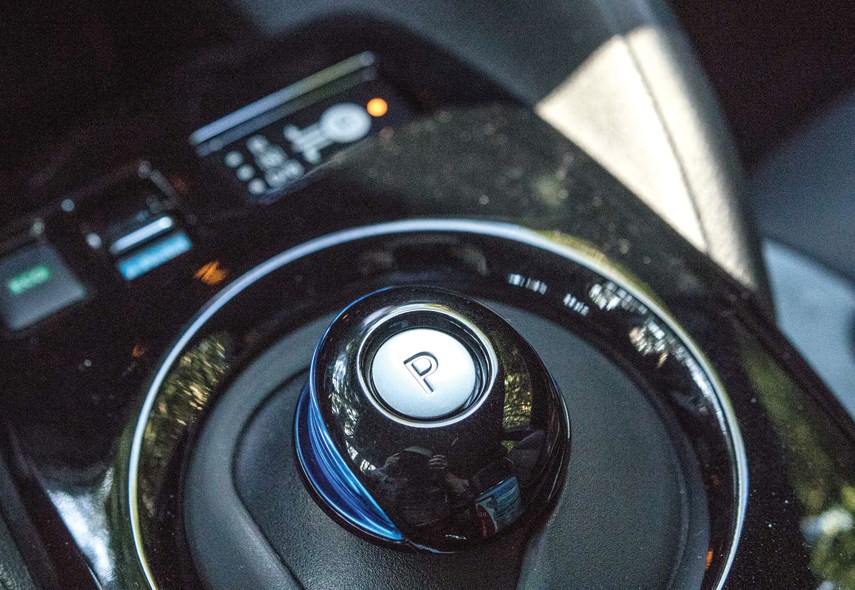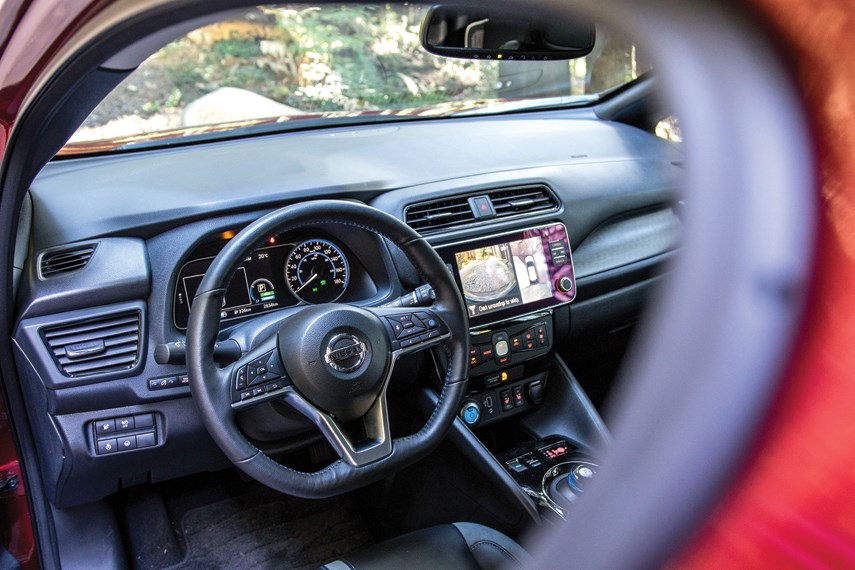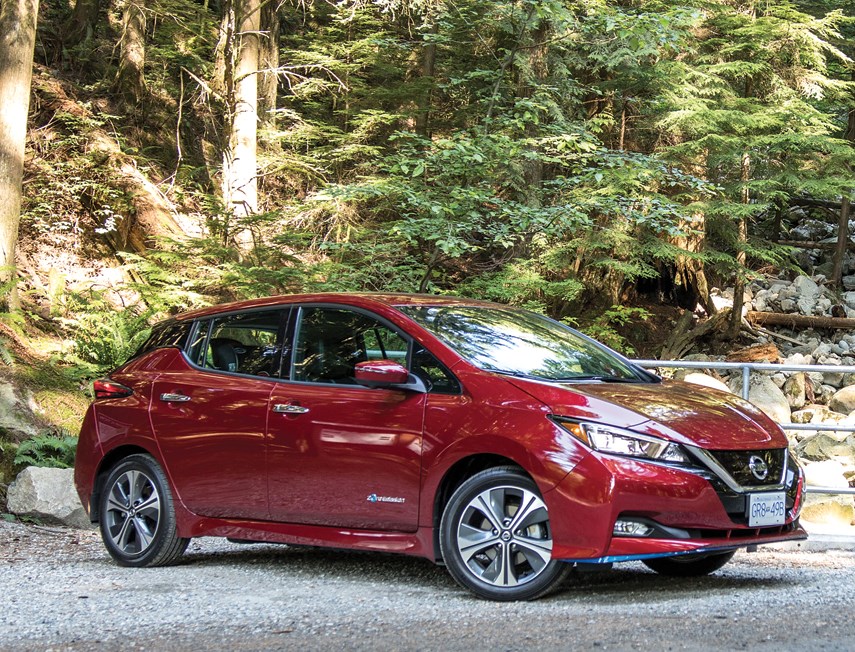The Nissan Leaf is the best-selling electric vehicle in the world.
Not that you’d know it – while other manufacturers grab headlines with shocking performance and hidden Easter eggs, the Leaf has been happy to offer a more practical-minded approach to electric motoring.
Mostly, the strategy’s worked. With more than 400,000 of these little EV hatchbacks delivered world-wide, the Leaf is a success story for Nissan. Further, if you consider that some of the lessons learned from the Leaf’s powertrain carry over to the popular e-power drivetrains available overseas, Nissan’s investment in the Leaf has certainly paid off.
However, after almost 10 years on the road, the Leaf isn’t quite as attractively green as it once was. Good news everyone, here’s the Leaf Plus, which builds on that useful Leaf practicality with some much-appreciated upgrades.
More range, better driving assists, and new gauges that display range more accurately are all good reasons to keep the Leaf Plus on your EV shopping list. Let’s turn over the new Leaf. Not literally, obviously.
Design
Vaguely frog-like at launch, the Leaf is still not especially attractive. There seems to be a school of thought in car design that any eco-focused machine has to look vaguely amphibious.
Happily, it’s a bit more conventional-looking, and tends to blend into day-to-day driving nicely – as opposed to the new Prius, which still looks like a deranged robot cat. Pick a neutral colour like white, and the Leaf is slightly futuristic looking, but still very sensible.
My test model was a top-spec SL model, which meant it came with 17-inch wheels (15 is standard). LED headlights and taillights are standard.
Environment
Being a hatchback, the Leaf has plenty of interior space, enhanced by the fact that the batteries are located in the floor. In fact, it leads the segment in interior volume, ahead of crossovers like the Kia Niro.
Still, with a couple of car seats strapped in back, the Leaf’s rear seats weren’t huge. Further, while the trunk is large at 668 litres, the seats don’t fold flat. It’s a useful passenger hauler, but smarter packaging will have to wait for a fully brand-new Leaf.
Apart from the unique shifter, which is sort of like a cross between a doughnut and a Prius’ shifter, the Leaf is pretty conventional inside. Gauges show you electrons transferring around and so forth, but otherwise the Leaf could be any other small hatchback.

One notable difference is in the performance of the stereo. SL models get a Bose premium audio, and Nissan is generally good at getting performance out of their audio equipment. However, the Leaf is so quiet – a boon of EV driving – that the audio quality seems that much sharper. It simply doesn’t have engine noise to compete with.
Seats are very comfortable up front, and a Leaf would make an ideal commuter. Further, the way it drives is even more relaxing.
Performance
Increasing the battery range on the Leaf brings total claimed range to 363 kilometres. This is more than enough to handle most commuting duties, although cold weather or high speeds sap the battery quickly.
Having that much extra juice in your battery, however, means driving the Leaf around doesn’t require much planning. Fully charging on a 240-volt outlet can take almost 12 hours, but most people will just plug in to top off when they get home, and sleep while their Leaf regenerates. You can’t sleep while pumping gas in your car. People start honking.
The other benefit to the Leaf Plus’ larger battery is more power. While it’s no Tesla Ludicrous mode, the Plus gets 214 horsepower and 250 foot-pounds of torque. With the instant-on way EVs deliver power, that’s plenty for a little city runabout. Figure 0-100 km/h times a bit slower than a VW GTI, but quicker than any Prius.

Having said that, driving a Leaf isn’t at all about quick zaps of acceleration. Instead, reach down and flick on the switch marked e-Pedal. Annoyingly, you’re going to have to do this every time you start the car, but it’s a really great feature.
With e-Pedal engaged, coming off the throttle causes the Leaf to slow down sharply, regenerating kinetic energy into electric. In stop and go traffic, you rarely need to move a foot over to touch your brakes. It’s very relaxing without being distracting, and lulls the driver into a friendlier driving style.
Need a burst of power to get out of a side street? Sure thing, and the Leaf’s low centre of gravity means it handles quite well too. However, the steering wheel is as numb as an old Buick. Better to just take it easy.
A further note on range, as it’s still a large consideration in EV vehicles. Getting the full 363 km out of the Leaf Plus’ battery is going to be a challenge. Getting around 250 km of daily usage without even thinking twice about it is absolutely no problem whatsoever. That’s more than enough for most people, and if you have the option to top up at your work or at the grocery store, so much the better.
Features
At $42,298 for the base Leaf and $44,498 for the least-expensive Plus model, the Leaf is not an inexpensive car. The Plus SL model I tested hit the register for $51,798 after freight. It’ll take you a while to make the savings up on fuel versus a conventional hatchback.
However, you don’t really need to wait. The federal and provincial rebates on the Leaf Plus add up to $8,000 off the price tag. That’s a strong financial incentive, to go with the Leaf’s pleasant driving manners.
As mentioned, claimed range is 363 km in total. Consider investing in a charger for your own home rather than relying on public chargers, as rising demand for EVs might soon mean lineups.
Green light
Sensible packaging; relatively affordable; pleasant driving style.
Stop sign
Not a brand-new design; still needs the rebates to make financial sense.
The checkered flag
One of the most popular EVs for a reason. However, the competition has caught up fast.
Competition
Kia Soul EV ($42,495)
To my mind, the Kia Soul is a vehicle that best represents this automotive era. It’s available in trims from cheap to sporting, is fresh and funky looking yet practical, and you can get it in all-electric form.
The Soul EV has a bit more, uh, soul than the Leaf, while still offering plenty of practicality. The power’s about the same, and the Soul just slightly pips the Leaf on Range. Kia’s come a long way.



